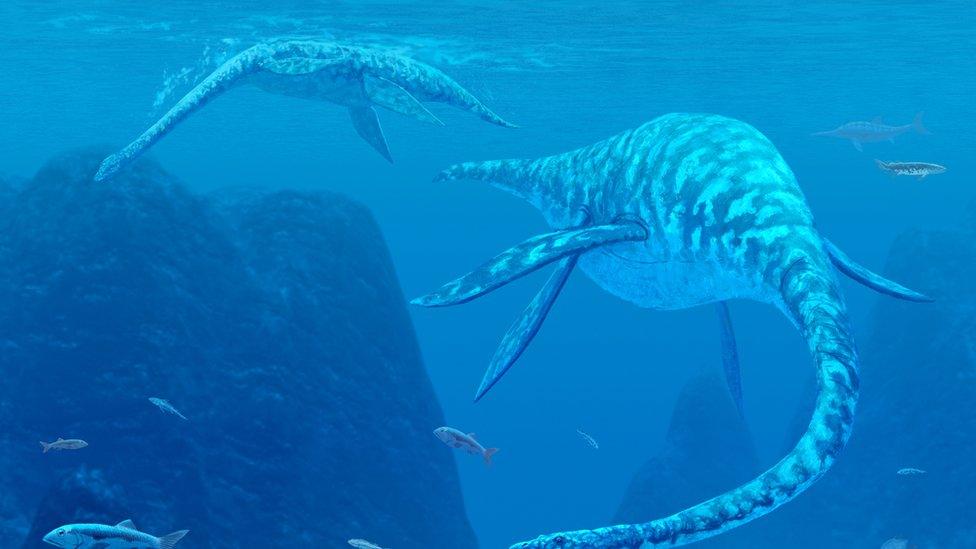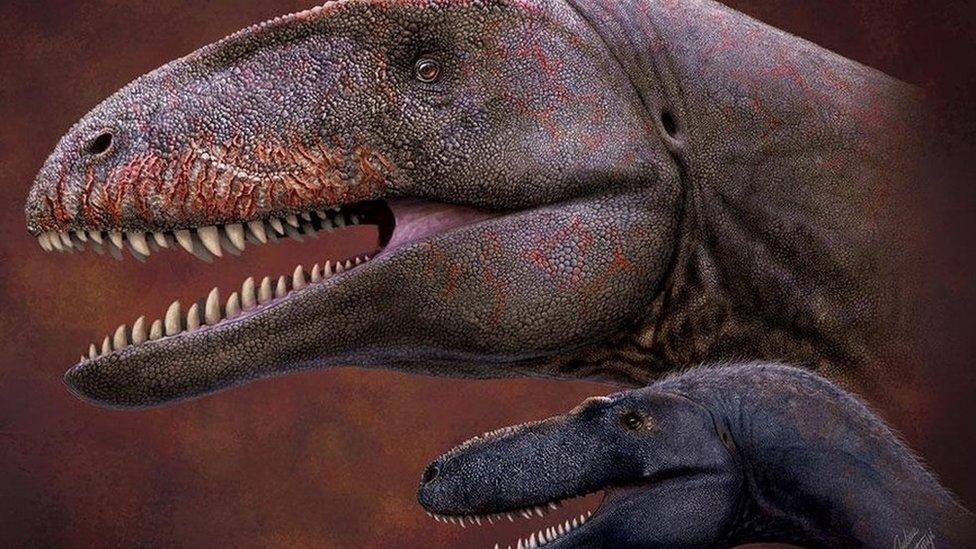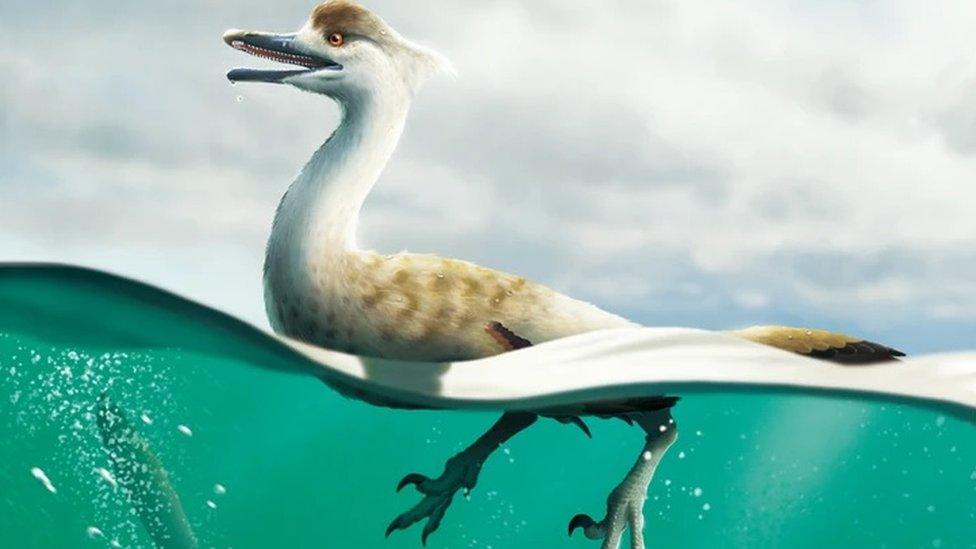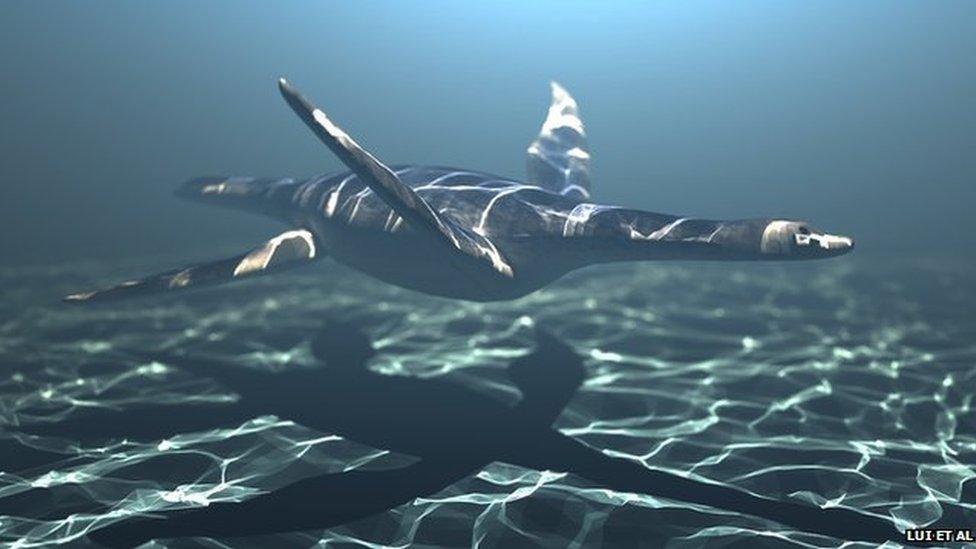Ancient fossil: 100 million year-old beast's remains discovered
- Published
- comments
100-million-year-old rare plesiosaur fossil found by friends in Australian outback
A group of fossil hunters have dug up the remains of a 100 million-year-old creature in the Australian outback which might help us to discover a brand new prehistoric species.
Palaeontologists (scientists who study fossils) say this finding is exciting and it's like discovering the famous Rosetta Stone - an artefact which helped experts decode Ancient Egyptian hieroglyphics.
The group found the fossilised remains of a long-necked plesiosaur, known as an elasmosaur, in Queensland, Australia. The elasmosaur lived in an ancient sea and it had flippers like a turtle and a long neck like a giraffe.
It's hoped the discovery will reveal clues about new species of ancient underwater giants who lived amongst the dinosaurs.

An artist's illustration of two Elasmosaur marine reptiles swimming underwater
This is the first time that an elasmosaur skull has been found connected to its body in Australia.
This discovery is significant because it helps palaeontologists to understand and identify other fossils held in museums.
Dr Espen Knutsen, the senior curator of palaeontology at the Queensland Museum, said this discovery is "globally rare" and that he "instantly knew this one was special".
This particular elasmosaur had its complete skull, neck and front half of the body discovered all together which will allow scientists to see better and find out more about the body structure and its way of life.

The group of friends discovered the fossil, which is between five and seven metres long, and the elasmosaur was not even fully grown when it died!
Dr Espen suggested the elasmosaur may have been "bitten in half" by the top predator of its day: the 10-metre, 11-tonne kronosaur!
Scientists have wondered whether the prehistoric reptiles used their teeth to filter and feed on scraps from the ocean floor, and their big flippers to slowly cruise along the oceans, just like whales do today.
- Published13 September 2021

- Published6 December 2022

- Published21 December 2015

